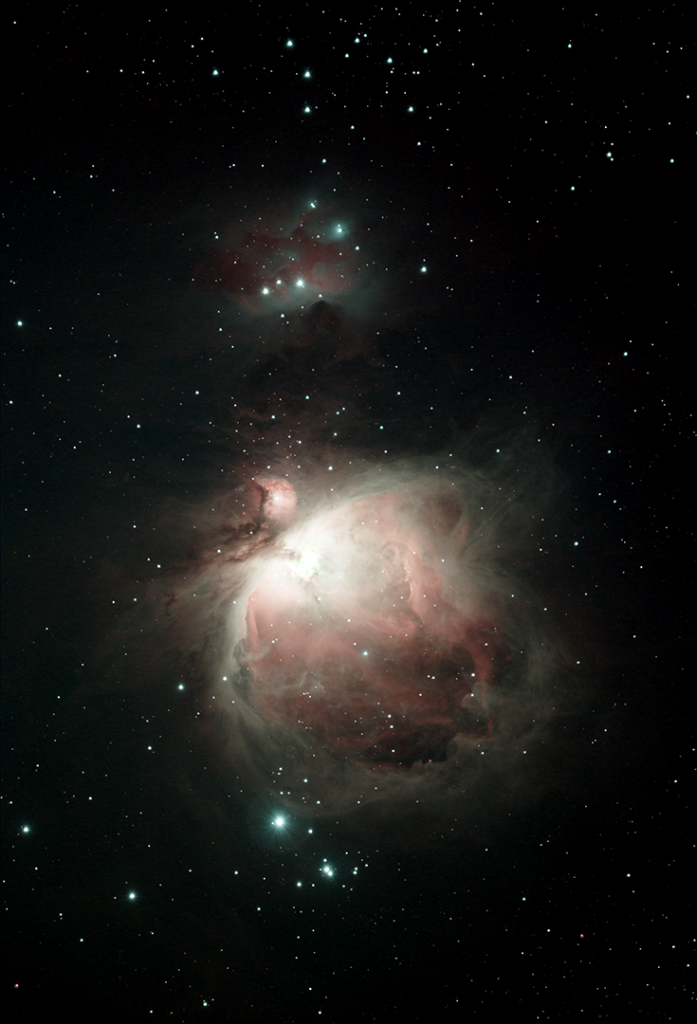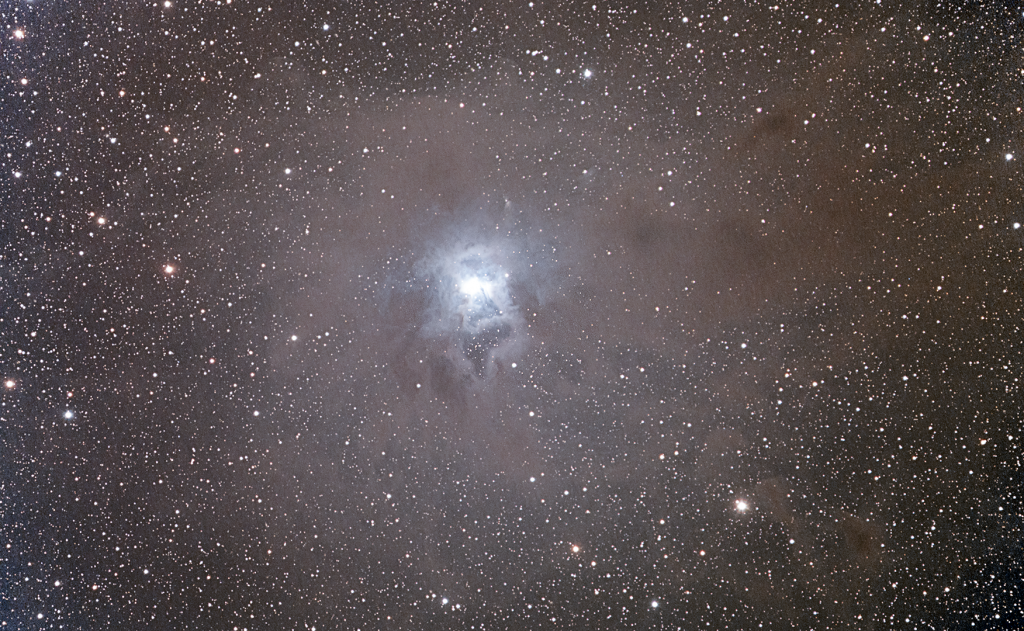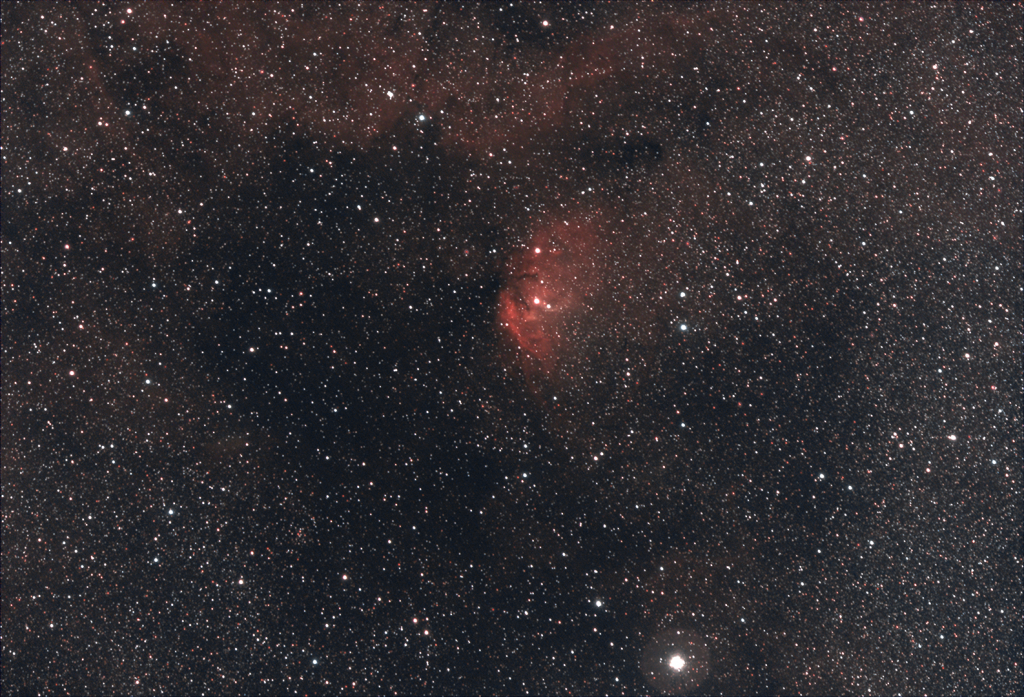Later Friday night, I shot this, my first attempt at the Orion Nebula (and nearby Running Man Nebula) for the season. I used the same 11″ SCT with Hyperstar but switched from the light pollution filter to a dual narrowband. This was 60 sixty second images combined and all post processing was done in Photoshop. I need to revisit this, due to its high dynamic range I could shoot some 30 second images and 120 second images and merge with these.



